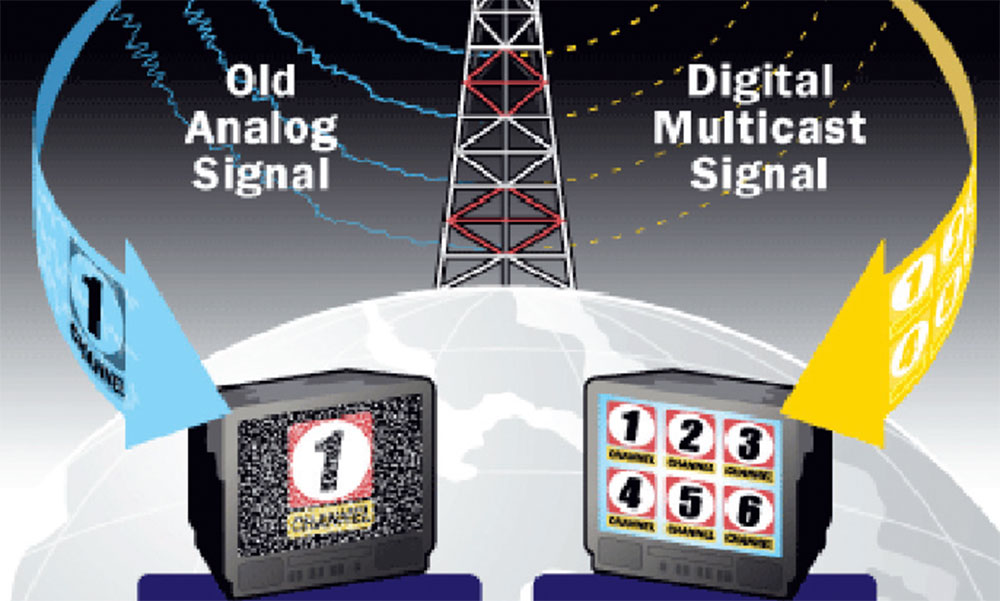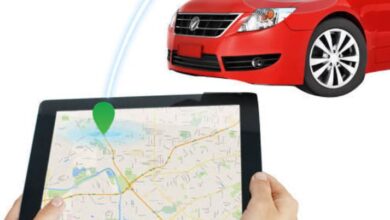GOING DIGITAL

Digital Broadcasting
BROADCASTING AUTHORITY OF ZIMBABWE
DIGITAL TELEVISION BROADCASTING MIGRATION
Zimbabwe is required to migrate from the current analogue broadcasting technology to the digital broadcasting technology by 17 June 2015, in accordance with the migration deadline set by the International Telecommunications Union. In this regard, the Broadcasting Authority of Zimbabwe would like to educate members of the public and other key stakeholders on the meaning and implications of the migration process, in order to prepare the public for this new era in television broadcasting. Initial focus will be given to the meaning of digital broadcasting migration, the benefits associated with the digital television broadcasting technology and to the implications of migrating to the digital television platform. The Authority will also be holding consultations with key stakeholders with a view of ensuring a smooth change over. Although the subject has a technical inclination, the Authority will endeavor to simplify the subject in a manner that may be understood by all.
The Authority values feedback from all concerned. This feedback will be used to give further clarification on any issues that may be raised on the subject, in order to improve on the communication process. All feedback, clearly marked ‘Digital Broadcasting Migration’, can be received by the Authority through the following BAZ e-mail address: [email protected].
1. What is analogue television broadcasting
Analogue television broadcasting is the use of the analogue technology in the transmission and reception of television broadcasting services. The analogue technology has been in existence since the use of technology in different everyday applications, including in telecommunication and broadcasting. The analogue technology essentially converts information (sound and pictures in the case of broadcasting) into electrical signals which are then used by the system to convey the information, say, through modulation of frequencies for the actual transmission.
2. What is digital television broadcasting
Digital television broadcasting is the use of the digital technology in the transmission and reception of broadcasting services. The term ‘digital’ implies using digits or numbers in the representation of the information (again sound and pictures in broadcasting). The two technologies (analogue and digital) are essentially the same in terms of information acquisition in that both convert the acquired information (sound, pictures) into electrical signals. However, instead of using the electrical signal directly, the digital technology takes representative samples of the original signal and converts these samples to digits, into what becomes a digital representation of the information. This digital information is then used in the application at hand.
3. What are the key advantages of the digital technology
Since the information is in digit format, the information can be processed using computers, and be conveyed using digital transmission techniques. Digital information does not degrade easily and where it becomes degraded, particularly during transmission, it can be corrected and be restored to its original state. This enables the original quality of the information to be restored or maintained at the receiving end. The digital technology also introduces the concept of signal compression whereby only the amount of information necessary to reproduce the original signal at the receiver is transmitted. This concept, in digital broadcasting, enables a lot more programmes to be transmitted simultaneously on a single frequency using the same transmitter. The analogue technology could transmit only one programme on a single frequency, on the one transmitter. A separate frequency and transmitter would be required for any additional analogue services.
4. What is digital broadcasting migration
Digital broadcasting migration means the introduction of the digital broadcasting technology in the provision of broadcasting services and moving away from the use of the analogue broadcasting technology in broadcasting. This migration is driven by the benefits that are associated with the digital broadcasting technology, which have seen most countries, the world over, embarking on the process to move over to the digital broadcasting technology.
5. What are the benefits of migrating to the digital television broadcasting technology
i. More broadcasting services can be accommodated
With the analogue broadcasting technology, only one television service could be delivered on a single frequency or a single network of transmitters (for national coverage of the television service). If we take the example of the UHF television band which has four frequencies per site and therefore can support four national coverage networks, this means only four analogue television services of national coverage could be provided. However, the digital technology can carry, on average, twenty television services on a single frequency or on a single transmitter network (for national coverage of the services). The four UHF digital networks would therefore be capable of delivering eighty television services of national coverage.
ii. Savings in infrastructure cost
Continuing with the UHF band example, with the analogue technology the four analogue television services would require a transmitter network each for national coverage of the services. In the digital domain, these four services can easily be carried by one digital transmitter network without even filling the full capacity of that one network alone. The four analogue services would require four transmitters per site for forty-eight sites whereas the digital network would require only one transmitter per site. This points at significant savings in transmission infrastructure costs.
iii. New broadcasting business models
The service capacity generated by the digital broadcasting technology creates an opportunity for new broadcasting business models to be realized. Whereas the analogue broadcasting technology was mainly associated with free-to-air broadcasting services, the capacity generated by the digital technology allows for the packaging of services (channels) which can be accessed on a subscription basis. A subscription based service is a reality with the terrestrial digital technology, in the same way that such services have, hitherto, been provided via satellite transmission.
iv. Improved coverage quality
Analogue television services degrade in picture quality the further away the television set is located from the transmitter. This progressive degradation results in showers, loss of color, poor sound quality and ghosting, the further the television set is located from the transmitter. With the digital technology, picture and sound quality is the same throughout the transmitter’s coverage area, whether the receiver is sitting right next to the transmitter or right at the last point where an appropriate signal level is received. This allows viewers to receive the best and the same picture quality throughout the coverage area of the transmitter, without any variation in terms of the quality. The only drawback is that picture failure is rapid beyond the threshold of reception.
v. Better picture and sound quality
The digital technology supports picture resolutions much higher than those of its analogue counter part. This, coupled with what is called progressive scanning, results in much better picture definition and, therefore, picture quality. High Definition and Three Dimension Television (3D TV) are supported by this platform. Work has already started on standardizing even higher picture definition formats (Ultra High Definition) such as 4K and 8K, which provide even better picture resolution through the digital platform. Excellent sound quality, surround sound and the use of multiple languages on a programme are all possible features of the digital broadcasting technology.
vi. Mobile broadcasting can be introduced
Apart from delivering television services to fixed receivers, mainly to television sets in the home, the digital technology allows for delivery of service to receivers in motion (in a car, bus, or train) and to portable devices such as cell-phones, tablets and laptops. The analogue technology had difficulty in addressing these reception environments due to its failure to cope with motion, signal reflections and electrical noise.
vii. Provision of value added services
Unlike the analogue broadcasting technology, the digital broadcasting technology is not limited to the delivery of television programmes only. Value added and interactive services such as Electronic Programme Guides, television shopping, weather forecasts, electronic newspapers etc can also be accessed on the television set by the viewer, ushering in a new television viewing experience.
6. What does the migration process entail
As already pointed out, digital broadcasting migration means introducing the digital broadcasting technology and moving away from the analogue broadcasting technology. At the end of the migration process, the analogue technology is switched off and the digital technology takes over as the platform for provision of broadcasting services. This analogue switch-off is timed to occur on or before the international deadline for digital broadcasting migration of June 2015, depending on the progress that a country makes in meeting the deadline. The two technologies will co-exist (simulcasting) during the transition period with the digital technology taking over by the deadline for migration.
7. What does digital broadcasting migration mean to the viewing public
The capacity generated by the digital broadcasting technology allows for more players to be licensed for the provision of many more television services compared to the analogue broadcasting technology. This means more choice for the viewers, with the possibility of services being licensed by genre, for example, musical, news, gospel, movie and so on. In fact, the benefits outlined earlier on will be there for members of the public to experience and to enjoy.
However, digital transmission, which results from migrating to the digital broadcasting technology, is not directly compatible with analogue television sets. In other words, the majority of television sets in our homes will not be able to tune to the digital transmissions to receive the digital broadcasting services due to incompatibility between the analogue and digital technology. This does not mean that the television sets that we have in our homes will become obsolete or will have to be thrown away. They can still be used but in conjunction with a gadget called a set-top-box. The set-top box, which will be connected to the analogue television set just like a decoder (indeed it is also a decoder), converts the digital transmission into a format that can be displayed by the analogue television set, allowing the reception and viewing of digital transmission using existing analogue television sets. Alternatively, an integrated digital television set (IDTV) may be acquired and this type of television set will tune to digital transmissions directly without the use of a set-top-box.
A separate guidance will be issued on the subject of set-top-boxes and IDTVs. The requirement for these set-top-boxes and IDTV is that they must be specified for the DVB-T2 transmission standard used with MPEG-4 compression, the technical standards that will be used for digital television broadcasting in Zimbabwe.




